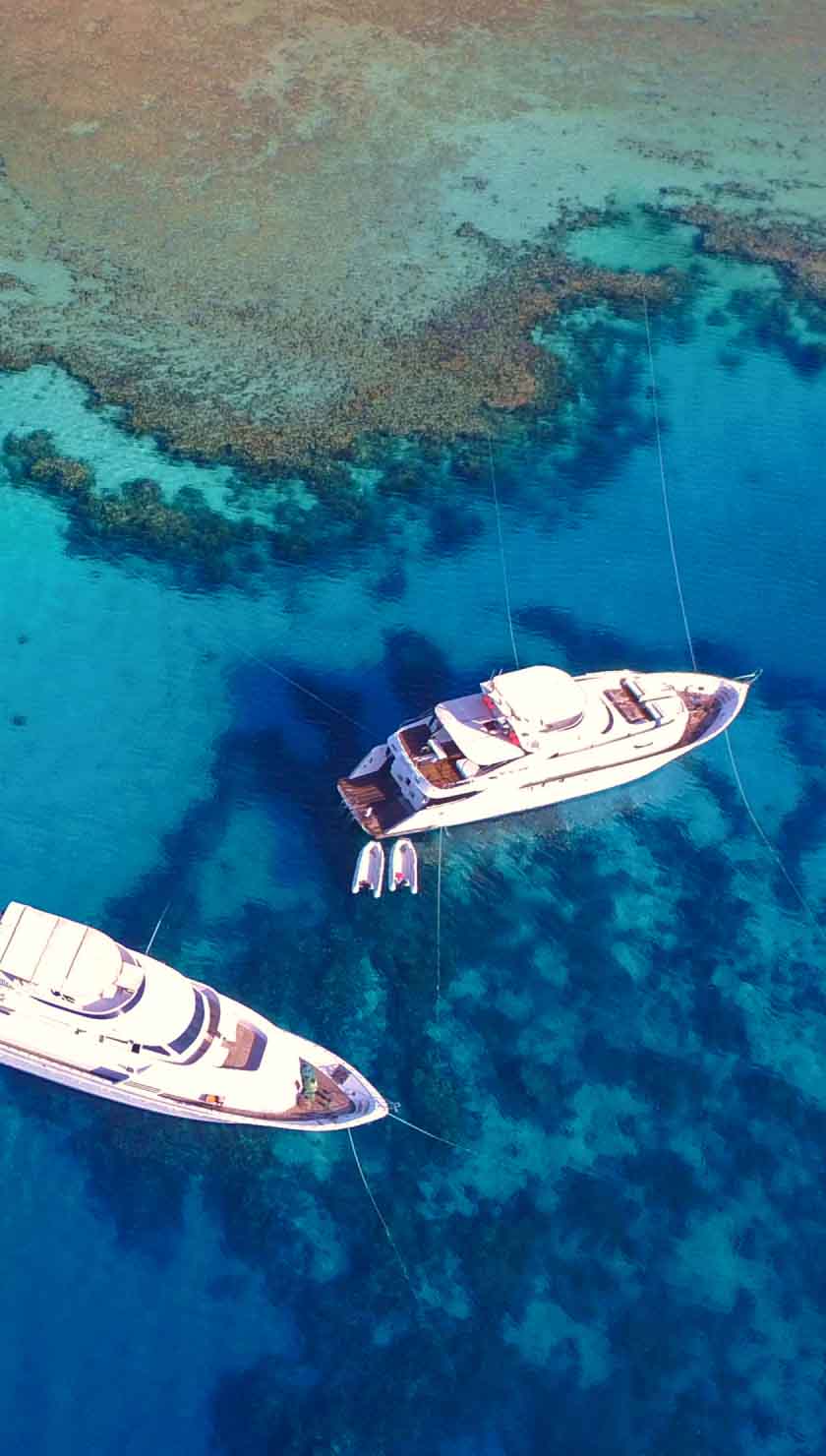Liveaboard Diving in Gili Islands
What To Expect On A Gili Islands Liveaboard
Liveaboards visiting the Gili Islands will take divers to a well-known dive area in this part of Indonesia. In the local language, Sasak, Gili translates as ‘small island’ or islet. Although many ‘Gilis’ exist in Indonesia, the three to the North of Lombok Island stand out in the diving world. Indonesian liveaboard dive trips in the Gili islands are incredibly popular due to the unspoiled nature of the area and the abundance of marine life.
Gili Trawangan (or Gili T) is the largest and most populated island, with 1500 people living there. Gilis Meno and Air are slightly smaller and less populated, with secluded beaches and beautiful reefs. No motorized transport is allowed on any of the Gili islands, and anyone staying there must travel by bicycle or on foot. The islands are beautiful, but the facilities are limited, with only a few bars and restaurants. This a perfect reason to visit by liveaboard and have your very own floating dive resort on your doorstep every day.
The main business in the Gilis is tourism, as they are home to mangrove forests and have a small surface area, making farming difficult. There are a few small resorts on the islands, although these are somewhat limited in facilities, and freshwater must be brought in from the mainland. These resorts mainly focus on water sports and honeymooners looking to enjoy more secluded beaches. Most people who visit the Gilis do so from a diving liveaboard, from the nearby islands of Lombok and Bali.
The Gili Islands Underwater
Diving is one of the main activities around the Gili islands due to the pristine reefs surrounding the islets and the slopes further out, attracting bigger animals. The reefs around the islands are fairly shallow with excellent visibility, up to 20 meters or more. They are full of shallow reef sites, perfect for afternoon dives on a liveaboard. The reefs around the Gilis are a liveaboard dive cruise location suitable for new and experienced divers.
These reefs are home to a stunning variety of colorful hard and soft corals and beautiful reef fish. The reefs are also home to many turtles, thanks to local efforts to protect them. It is not unusual to see several in a single dive. Cuttlefish and blue-spotted stingrays are common sights in shallower dives; both are great subjects for photographers.
The islands slope into deeper water a little further out, and here is the place to see the bigger animals. If there is a little current on these slopes, there is a chance that you will see white and black-tipped reef sharks patrolling the reefs and juveniles with their tails sticking out from coral bommies. Mantas are also seen sometimes passing by, and when the current picks up a bit more, there is even a chance to see mola mola.
Dive Sites of the Gili Islands
Shark Point is one of the deeper sites for diving in the Gili islands, and this site is very popular with diving liveaboards because of the number and variety of marine life. The dive starts on the shallow reef, where there is an abundance of coral and lots of turtles to swim with. Deeper down, you can see white and black-tipped reef sharks and even mantas gliding gracefully past. It is worth noting that this dive site is 35 meters at the deepest point and isn’t really suitable for beginners.
On the opposite end of Gili Trawangan from Shark Point is Manta Point. This is also a sloping reef with plenty of turtles and small white tips sleeping under rocks in the deeper parts. There is also a good chance of spotting mantas passing over the reef, so best to keep your eyes peeled.
On Gili Air, several sites are more suitable for beginners, so if this is your first time on a diving liveaboard, this could be the place for you. The reefs slope gently down to around 20 meters with fantastic shallow reefs full of turtles, shrimp, and pygmy seahorses. At Han Rock, there is also the Turtle Rock, where green sea turtles are known to sit on the sponges to rest. Gili Meno shares the easy diving conditions of Gili Air, and the shallow reefs are often home to beautiful eagle rays and plenty of turtles.
Top Tips for Divers
- Make the most of your time by boarding and disembarking from a different location, more diving, and less transit time.
- Stay on deck while traveling from Lombok to the Gilis, as dolphins often pass through this area in large pods.
Getting to the Gili Islands
There are a few options for getting to the Gilis, but for divers, the best choice is on a dedicated dive cruise. Several departure points, including Lombok and Bali, are close to the islands. If you have some time and want to take in the amazing Komodo Park, it is also possible to depart from Labuan Bajo in Flores and work your way across.
There are several different options for Indonesian liveaboard diving in the Gilis to choose from. Numerous luxury motor ships offer top-of-the-line facilities and accommodation. However, if you are on a budget, there are clean and simple options with shared cabins back-packer style. One of Indonesia's most popular liveaboard diving options is a traditional sailing boat or phinisi. These beautiful sailing ships offer a peaceful experience bobbing around the beautiful islands.
Flying to this part of Indonesia is relatively easy but usually requires a few connections. Bali and Lombok have international airports, but the one in Lombok is smaller, and the flights are normally from Singapore or Jakarta. Bali Airport also offers connections to Labuan Bajo if you want to start there.











